If you follow my social media pages, you’ve probably already see this, but it brought up an interesting (albeit frustrating) conversation that I thought I’d address here in a little more depth.
A couple weeks ago, a photographer friend of mine made me aware that Buzzfeed had kindly featured one of my items (and a photo she had taken years ago) in an article. However, the article linked to a cheap knock-off that was being sold on Amazon. The seller had stolen several of my photos to deceptively market their knock off.
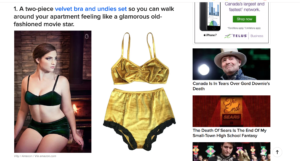
Several people commented to tell me that the same set was being sold not only on Amazon, but also on Zaful. I actually had been previously aware of it, as it had popped up through a facebook ad on my personal account one day!
Here’s the thing: unfortunately nothing can be done about a similar facsimile. It’s unfortunate for me, the designer, but really, how would anyone police who came up with what style first? Cora, from The Lingerie Addict wrote a really great piece about this last year. We all draw inspiration from many other sources, and if you follow trends in your design, you’re sure to run into similarities with other designers along the way. In this instance, I think there was very little doubt they were selling a knock off, though they offered it an additional colourway. But, it is a hard thing to police, and as a designer, I have little recourse. More than anything, it’s a a frustration. However, I’m confident in my skills as a designer. I know that I can and will continuously come up with new and unique garments. Being knocked-off comes with the territory.
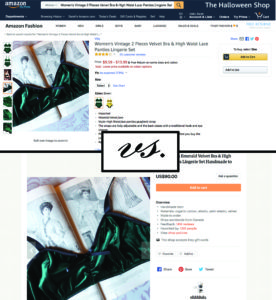
Theft of photos, on the other hand, really makes me angry. With the exception of a few collaborations that I do with photographers, all of my photos are taken by myself and are my intellectual property. Using someones photo without consent is a major no-no, and using a photo of a garment to sell a similar item is totally wrong.
Luckily for me, the photos were removed fairly quickly. However, Buzzfeed is still directing it’s readers to the knock off garments. I find this to be pretty hypocritical considering in April of 2016 they published a lengthy article about ultra-cheap knock-off shops that are popping up everywhere online. These shops steal photos and sell their own version of the garment. Often, the garment is made with sub-par materials, shoddy workmanship, and many of the details of the original garment missing (these can sometimes have some pretty hilarious results). This really really makes me angry.
These ultra-cheap knock-offs devalue everyone’s work. I was shocked when I saw that this Amazon seller was selling a velvet lingerie set for $9-$13. My Wintergreen Lingerie Set retails for $90.
There are several telling differences between my garments and the knock-off. Mine has a back closure, proper band and strap elastics, bow, lined cups, organic cotton gusset lining, adjustable straps, and customizable sizing… However, even if I omitted all of those features, I still could not produce a garment that cheaply. I wouldn’t even begin to cover the costs! Funny enough, the product description, wording which was partially lifted directly from my Etsy listing, says that the “straps are fully adjustable, and the back closes with a traditional hook and eye closure.” However, if you look at their actual garment, neither of those things are there.
So, how are they able to sell these items so cheaply? I’m not sure I have the answers. They use cheap materials and cut corners. As a maker I can see that in the changes they have made to my design. They likely are able to purchase those materials in much larger quantities than I can, making their cheap fabrics cost even less to them. I am also assuming that whoever is making these is being paid very little to do so. One of the things I have committed to with my brand is to keep production local, and ethical. However, one of the obstacles I face, as I look towards the future and outsourcing some of my production to a North American based workroom is that my current pricing structure does not afford it!
That’s capitalism right?
Well, here’s the problem: As a designer, and a maker, I need to price my garments to cover materials and labour costs (also taking into account the behind-the-scenes time and costs involved with pattern making, marketing, design work, sourcing, etc), but I also need to price competitively. If consumers have it in their mind that they can get a comparable garment for $9 (they can’t but they think they can’t!), that puts me in a pretty tricky situation.

Photo by G L Reid
Honestly, I’m surprised when I see those memes on social media where a shopper buys a ridiculously cheap dress online and then is utterly shocked to see it looks like absolute garbage in real life. I feel like critical thinking must have gotten lost in the process somewhere! At the same time, these sites use extremely deceptive marketing tactics to sell their knock offs, like not using actual photos of the garments they are selling.
I don’t have the answers, I mostly just wanted to raise awareness. The only way to stop this type of theft and deception is to stop buying from them.
I know it’s not a possibility for everyone, as people’s financial situations vary widely, but money talks. Instead of dropping $100 at H&M on a pile garments you’ll forget about in 3 months, spend $100 on something an Indie designer made. I promise, you’ll love it longer, wear it more and they will love you for it.
So, what can designers do? Indie designers are in a tricky position, but we can do a few things. Practice integrity with your own work. Give credit where credit is due. Treat each other with kindess and respect. And when another indie gets ripped off, let them know you’ve got their back!
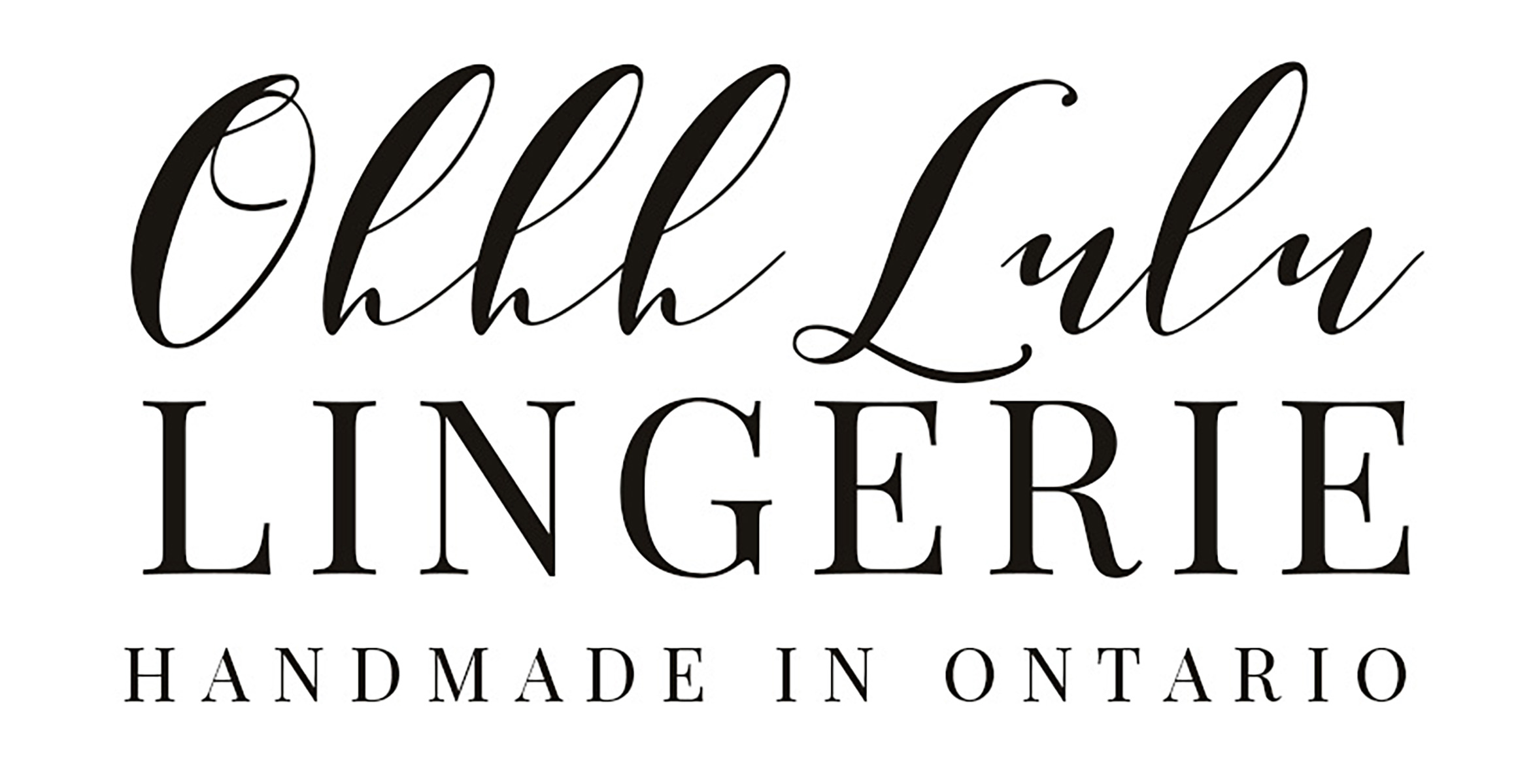

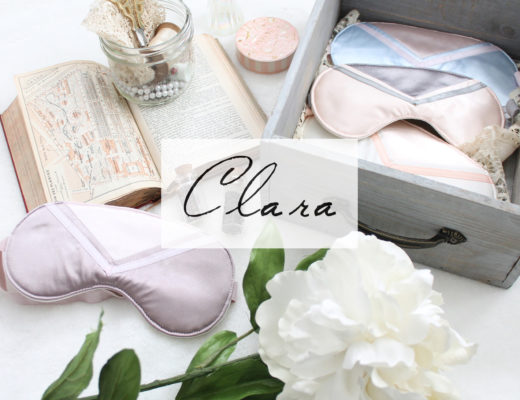
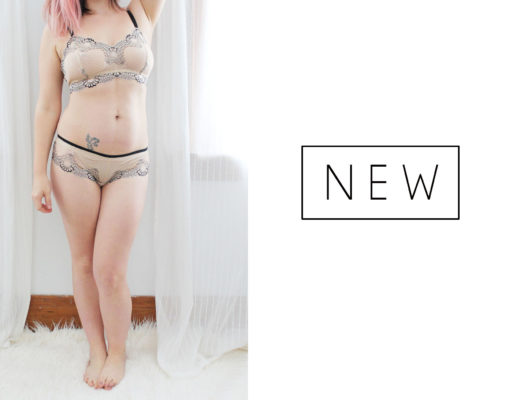

4 Comments
TracyKM
October 31, 2017 at 5:40 pmI saw your posts on Instagram, but I couldn’t quite follow what was happening. I thought it was “just” a knock off, not that they had stolen your photos. It is hard to police inspiration, for sure (though in the vinyl cutting crafty world, many are trying!! “That was MY quote!” type things).
I always wondered how to find out if your photos were being stolen. Every story I read, artists find out in random ways. It actually just happened to me on Friday. I bought a knitting pattern on Etsy. Actually, it’s a photocopy of a pattern from 1952 (I guess it’s still copyright so they shouldn’t be doing that!). I downloaded it, opened it up. As I was scrolling down, my OWN picture of one of the stocking patterns appeared in the file! I had copied a stocking a couple years ago; this was the original stocking I copied and the pattern was included in the patterns I bought now (because I wanted a different one in the set). They took the photo right from my blog. I hadn’t watermarked it because I hadn’t actually knit that stocking myself. I sent them a message, asking for a refund of the pattern purchase and to have the picture removed and if they wanted I would watermark it and then they could use it. They were very obliging, taking down the listing until they fixed it. But I haven’t seen a refund. I’m just glad it wasn’t something I had actually knit or designed myself.
Have you ever found other pictures stolen?
Emily
November 12, 2017 at 5:40 pmWow, that’s really crappy of them to knock off your designs AND use your photos to sell the knock offs! I wish that more could be done. And seriously, shame on Buzzfeed for continuing to direct people to the knock offs instead of to your site! I’m really not impressed with them. Keep your chin up, Sarah, you do beautiful work, try not to let deceitful (and hypocritical on Buzzfeed’s part!) people get you down. <3
I wish that more could be done. And seriously, shame on Buzzfeed for continuing to direct people to the knock offs instead of to your site! I’m really not impressed with them. Keep your chin up, Sarah, you do beautiful work, try not to let deceitful (and hypocritical on Buzzfeed’s part!) people get you down. <3
Jéssica
January 28, 2018 at 3:30 pmDo you know “econica” Brand?
Very similar Jasmine bra
sarah.e.norwood@gmail.com
February 5, 2018 at 10:08 amI do know of her! She’s legit and has her own distinct look